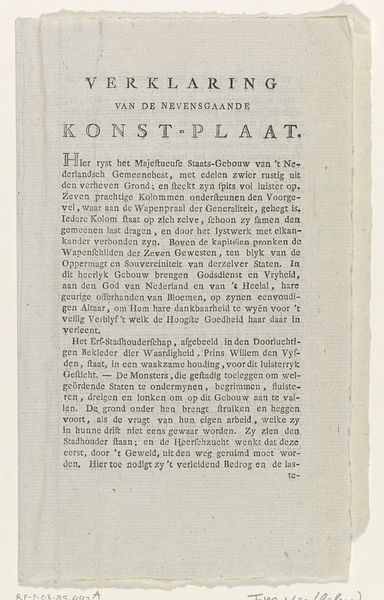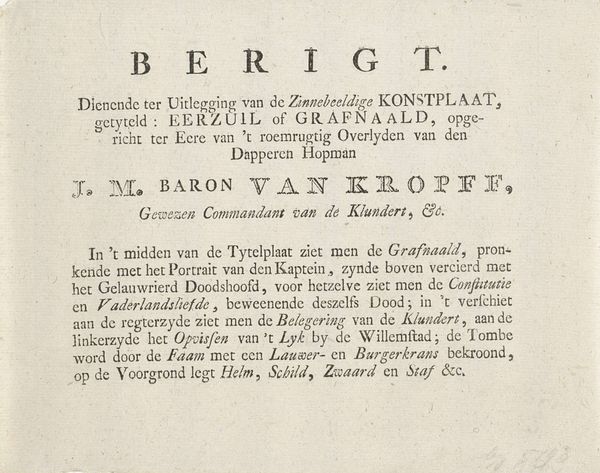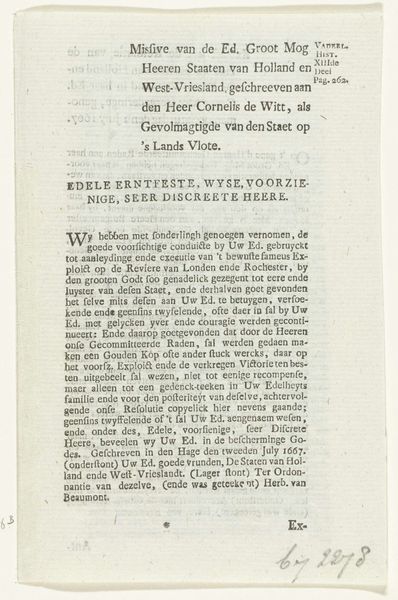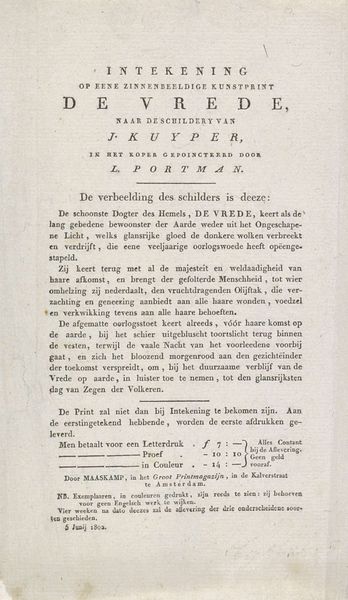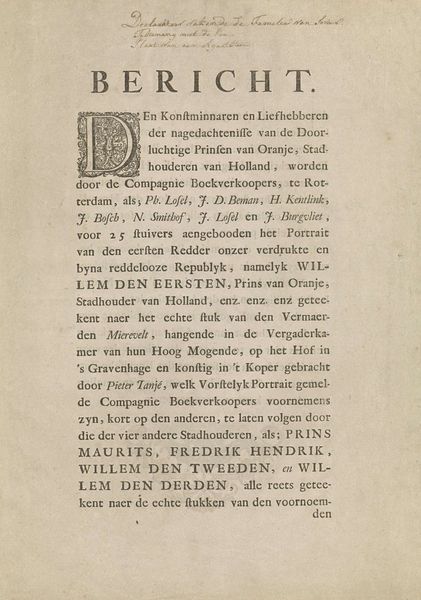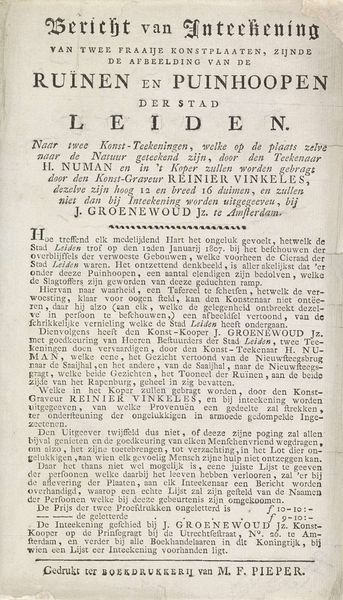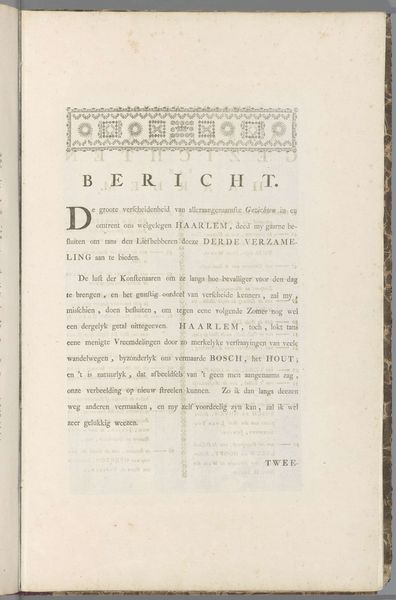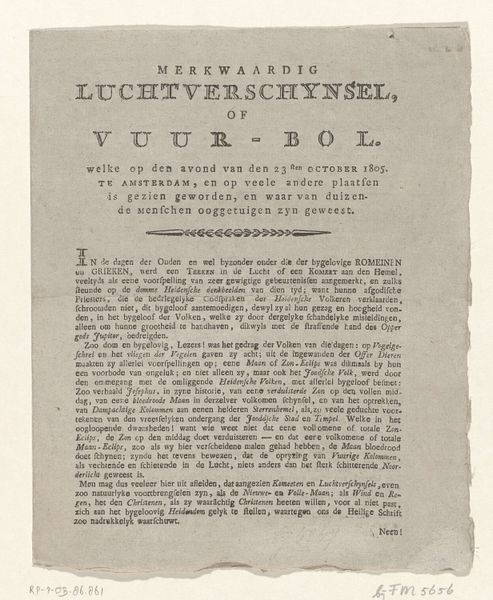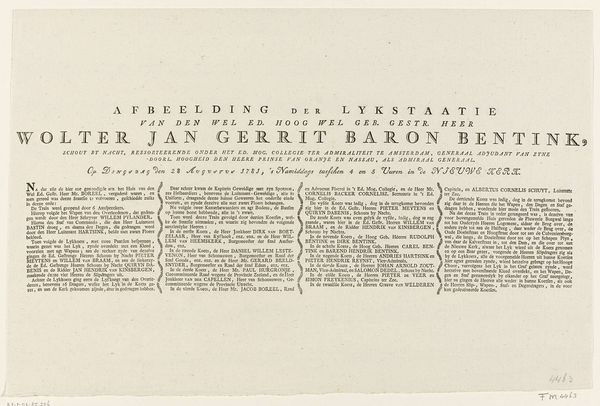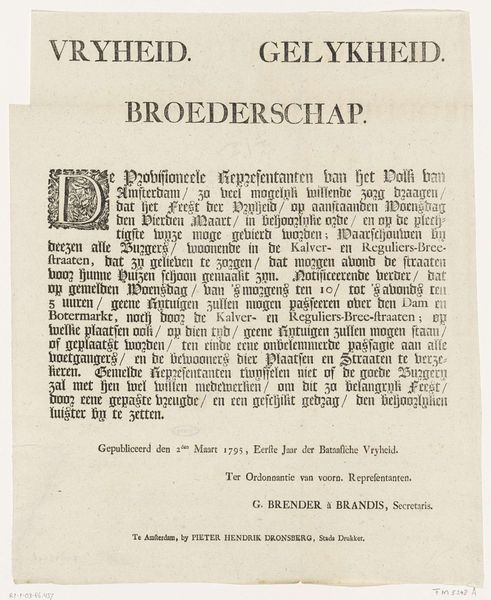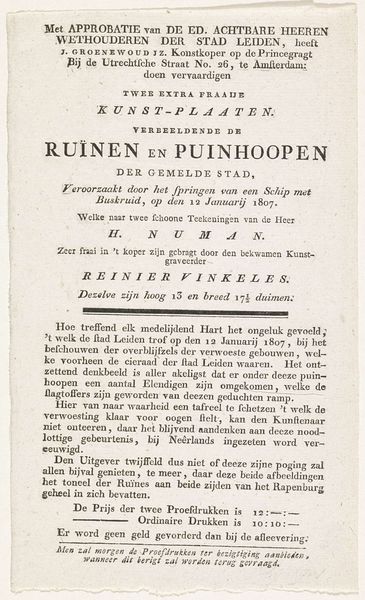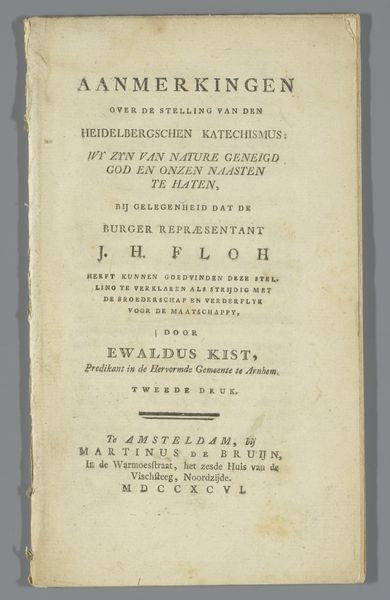
Dimensions: height 198 mm, width 158 mm
Copyright: Rijks Museum: Open Domain
Editor: Here we have "Raadselspel," or "Riddle Game," a print from around 1765 by Willem Breebaart. The print consists entirely of text; it has an almost instructional quality. What stands out to you when you look at this work? Curator: It's fascinating how typography becomes the art here. Looking at this piece, I immediately think about the democratisation of knowledge in the 18th century and the rise of literacy. Who had access to these ‘riddle games,’ and what social function did they serve? Was it a tool for education, or just leisure, and how does that affect our understanding of art? Editor: So, the function of art could be shaped by something as basic as who can read? Curator: Exactly. The piece is more than just text; it embodies the societal values around knowledge and leisure during the Enlightenment. Furthermore, consider the distribution of this work. Breebaart wasn't just printing; he was selling "at the bookstore on the New Street," suggesting the print circulated in specific, probably bourgeois, social circles. How might the game itself reflect or reinforce those social dynamics? Editor: So, understanding the audience gives context to the artist's intentions? Curator: Precisely. Understanding the layers of access, participation, and social dynamics helps us decode its cultural value. Perhaps it was a harmless parlour game, or perhaps, in its own way, a challenge to contemporary ways of thinking and societal values. How does this affect how we approach other works of this period? Editor: This gives me a lot to think about when considering not only the object but its relationship to its moment in history! Curator: Indeed. It encourages us to question and explore the broader social narratives surrounding artworks.
Comments
No comments
Be the first to comment and join the conversation on the ultimate creative platform.
